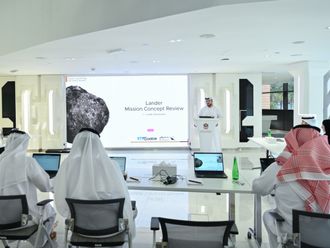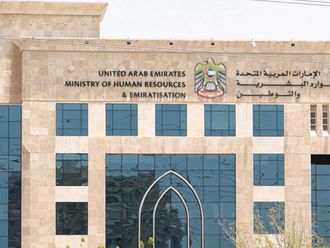The UAE has more than 600,000 children, and nearly 57,000 people aged over 60 at the end of 2001, while males were more than double the females, official figures showed.
Around 504,550 were aged between 10 and 19 years and a large number of them are on the verge of joining the work force while adults between 20 and 49 years totalled over 2.17 million, more than 62 per cent of the total population of 3.48 million.
The population pyramid released by the Ministry of Planning showed that by the end of 2001, males were more than double the females, standing at around 2.35 million.
In the age groups between 20 and 49 years, males accounted for nearly three times the females while the gap is much smaller in the child age group.
The figures showed children below four years old numbered 300,380, including 156,185 males and 144,195 females, while those aged between five and nine years stood at 309,000, including 161,073 males and 147,927 females.
The population aged between 10 and 19 years were put at 504,578 or around 15 per cent of the total population. A large number of them are about to join the labour market and this requires efforts to ensure steady growth in the domestic economy.
"The age structure in the UAE is sensitive as a large portion of the population are children and those ready to join the work force," an Abu Dhabi-based banker said.
"Such a structure, coupled with a high steady growth in the population, necessitates intensified efforts to spur economic growth to ensure jobs. Replacement of expatriate labour is only a partial solution which is not enough on its own."
The UAE has one of the highest population growth in the world, standing at more than seven per cent over the past 10 years. It was as high as 20 per cent during the oil boom of between 1970 and 1980, when thousands of expatriates began streaming into the emirates for jobs emerging from a massive construction programme kicked off by the UAE.
In 1968, the population of the seven emirates stood at only 180,000 and it swelled to 248,000 after two years. By the end of 1975, the population exceeded 500,000 and five years later it surpassed one million and continued its rapid growth to reach 1.38 million in 1985. In 2000, it more than doubled to 3.1 million and peaked at 3.48 million in 2001.
Forecasts by the Ministry of Planning showed the population will grow by around 7.6 per cent to reach 3.75 million at the end of 2002.
Despite the rapid growth in the population, the UAE has maintained its position as having one of the highest per capita incomes in the world, standing at around 19,000 in 2001. This is due to a large growth in the non-oil sector and expansion in oil and gas production.
A breakdown showed the 25-29 year age group is the largest population in the UAE, standing at around 481,000 at the end of 2001. It was followed by the 30-34 age group, which exceeded 456,800 and the 35-39 group of more than 426,000.
Divided into two main groups, the UAE's population is dominated by the younger generation, with people under 50 years standing at nearly 3.27 million, accounting for nearly 95 per cent of the total population.
Data shows youthful UAE population
The UAE has more than 600,000 children, and nearly 57,000 people aged over 60 at the end of 2001, while males were more than double the females, official figures showed.











